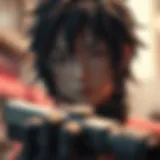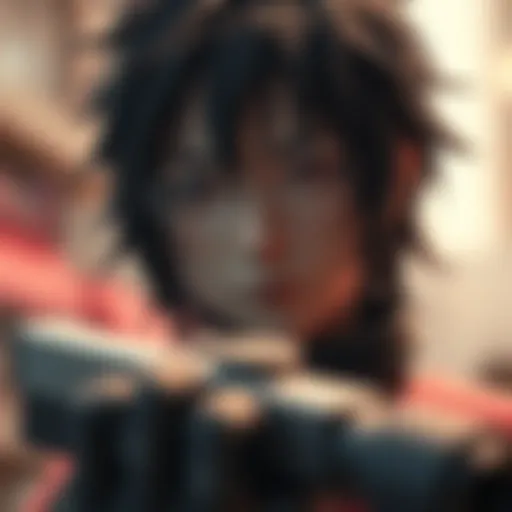Understanding the Hero's Harem Guild Code: A Deep Dive
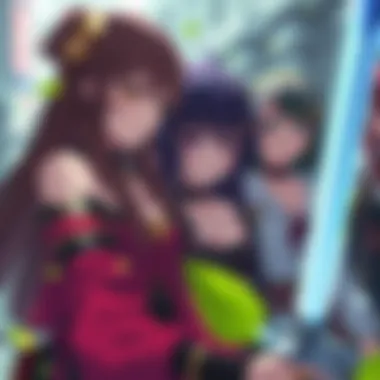

Intro
In the vast and colorful world of anime, few genres capture the imagination quite like the harem genre. The concept of a hero surrounded by a group of admirers creates a fascinating narrative dynamic, rich with cultural implications and character explorations. Within this framework lies the Hero's Harem Guild Code, a set of unwritten rules and characteristics that dictate the interactions among characters, shaping their relationships and the storylines they inhabit.
Understanding this code is not merely an academic exercise; it offers a lens through which one can appreciate how narratives are constructed in anime. It helps to unpack the subtle nuances that make these stories resonate with fans and creators alike. What makes a harem compelling, and how do the codes of conduct influence character arcs and viewer engagement? These questions sit at the heart of our exploration.
As we dive deeper into this complex topic, readers can expect to uncover:
- The cultural significance of the Hero's Harem Guild Code.
- Key character dynamics that emerge from these narratives.
- The narrative structure common in anime series that employs this code.
- Broader implications for fans and creators within this community.
Through a critical analysis of character relationships and common motifs, we aim to shed light on the evolution of interactions in anime, providing a comprehensive resource for both seasoned enthusiasts and those newly venturing into these waters. This exploration promises to enrich your understanding of the genre and its multifaceted contributions to contemporary storytelling.
Preamble to the Hero's Harem Guild Code
In the vast and colorful world of anime, the Hero's Harem Guild Code stands as a vital framework, influencing not only character dynamics but also the overall narrative structure of many beloved series. This code, embedded deeply within harem genres, guides the interactions of heroes surrounded by multiple romantic interests, creating a rich tapestry of motivations, relationships, and power plays.
The importance of understanding this code cannot be overstated. For fans, it serves as a lens through which one can analyze character development and story progression, enabling them to appreciate the subtleties and nuances that make these stories compelling. Moreover, creators can benefit from this comprehension by discovering effective means to craft engaging plots and dynamic character arcs.
Several key elements define the Hero's Harem Guild Code. These include:
- Character Dynamics: Heroes often interact with various character types, each bringing their own set of quirks and emotions to the table. This diversity creates tension and adds layers to the narrative.
- Emotional Connections: Understanding how different characters feel towards the hero enriches the storyline, providing depth and complexity.
- Hierarchical Structures: Within the harem, characters may vie for the hero's affection, establishing a hierarchy that can shift over time based on story developments.
In a genre where relationships often take center stage, the Hero's Harem Guild Code plays a critical role in framing how these relationships develop. Each interaction can lead to comedic scenarios, dramatic tensions, or even life-altering decisions for the characters involved.
Many discussions in online spaces, such as Reddit or niche forums, touch on the implications of this code and how it reflects societal norms and values in different cultures. By analyzing this code, both fans and creators can engage in a richer dialogue about the implications of these characters' relationships and the broader context within which they exist.
Ultimately, grasping the Hero's Harem Guild Code not only enriches the viewing experience but also opens the door to a deeper understanding of story construction and character interaction within the anime universe.
Defining the Harem Genre
The harem genre, characterized by a central male protagonist surrounded by multiple female characters with varying degrees of attraction, serves an essential purpose in understanding the dynamics within the Hero's Harem Guild Code. This exploration not only opens doors to narrative possibilities but also delves into the intricacies of relationships, emotional undercurrents, and cultural dynamics at play within this expansive universe.
The significance of this genre lies in its ability to capture diverse character archetypes. Each female character typically embodies specific traits – from the nurturing figure to the aloof femme fatale. This variety offers viewers and readers deeper insights into the male hero’s psyche, showcasing his interactions with contrasting personalities. The intermingling of these character types creates a fertile ground for conflict, humor, and drama, essential ingredients in storytelling.
While harem stories may seem superficial at first glance, they often tackle profound themes, including friendship, jealousy, and personal growth. Viewers are not just spectators; they're unwittingly led to ponder questions about affection, loyalty, and the quest for individual identity against the backdrop of relationships. Therefore, understanding these elements within the harem genre is paramount for anyone wishing to grasp the full implications of the Hero's Harem Guild Code.
Origins of the Harem Concept
The concept of the harem has roots tracing back to historical practices in certain cultures, where multiple partners were common within royal households. However, in the context of storytelling, the harem's emergence in literature and media often draws from the themes of desire, choice, and rivalry that resonate universally across time.
The harem concept took a significant turn with its adaptation into anime and manga, where it evolved to reflect contemporary societal views on romance and attraction. Early examples can be seen in works like "Tenchi Muyo!" which established the core premise of a male lead surrounded by women vying for his affection. Instead of merely portraying romantic relationships, these narratives hinted at deeper emotional connections and social commentary, paving the way for new storytelling frameworks.
Evolution Across Different Cultures
As the harem genre spread beyond its Japanese origins, it evolved to reflect various cultural contexts. Different societies interpreted the harem narrative uniquely, adapting it to resonate with local customs and attitudes toward gender dynamics.
In Western interpretations, for example, some media embrace a more comedic angle. Shows like "The Big Bang Theory" utilized harem-like structures with its male leads often surrounded by women who oscillate between romantic interests and platonic friends. This version strips the genre of its more serious undertones, prioritizing humor and relatability instead.
In contrast, other cultures retained the romantic tension and drama integral to traditional harem stories, often exploring unresolved desires or the consequences of relationships with heavy emotional weight. This variation highlights how adaptations of the harem genre can serve not only as entertainment but as a revealing lens into social norms and evolving attitudes toward relationships.
The harem genre, through its rich history and cultural interpretations, underscores the significance of emotional connection and character dynamics. These themes are vital for understanding the more profound implications of the Hero's Harem Guild Code, ultimately encouraging audiences to reflect on their perceptions of love, relationships, and personal identity.
"In the realm of harem, every relationship becomes a mirror, reflecting parts of ourselves we often overlook."
Key Tenets of the Hero's Harem Guild Code
The Hero's Harem Guild Code is not merely a collection of tropes or clichés that define the genre, but rather a framework that outlines the intricate relationships and hierarchies that exist among characters. This code plays a pivotal role in shaping narrative arcs and character development within these stories. Understanding the key tenets is essential, as it illuminates the underlying thematic elements present in many anime series today.
Character Dynamics and Interactions
In a harem setting, character dynamics are crucial. Usually, the hero finds himself surrounded by a group of diverse characters, each bringing their own unique traits and backgrounds to the table. These characters can range from the classic tsundere—who masks her feelings with hostility—to the shy, demure girl who may hide her emotions behind a quiet demeanor. This creates a rich tapestry of interactions that keep the audience engaged and invested in the characters’ relationships.
Consider, for example, the dynamics seen in series like Sword Art Online. Kirito, the protagonist, interacts with various female characters who each view him differently. His relationship with Asuna is deeply romantic, while his friendship with Sinon is based on mutual respect and shared experiences. These shifts provide drama and tension, serving to advance the plot while enriching the character development.
Moreover, the interplay between various characters fosters a sense of competition, often manifesting as romantic rivalries. This generates both opportunities for growth and conflicts that drive the narrative forward.
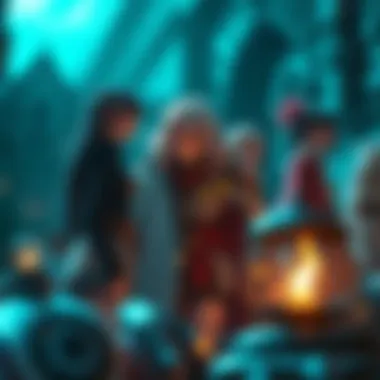

Emotional Connections and Hierarchies
Emotional connections in harem narratives often create intricate hierarchies among the characters. It is not uncommon for one character to be closer to the hero, while others may wish to vie for his affection. This hierarchy becomes one of the defining features of many harem stories, where the nature of the connection between the hero and each character influences the storyline significantly.
For instance, in To Love-Ru, the relationships evolve, resulting in some characters being more prominent than others at different points. Emotional stakes rise as characters must confront each other's feelings and navigate their desires. The hero often becomes a focal point for these interactions, and their choices can lead to immediate consequences among the group.
Summary
The Key Tenets of the Hero's Harem Guild Code, encompassing character dynamics and the emotional hierarchies that develop, are integral to understanding the complexity of relationships in anime. Recognizing these elements allows viewers to appreciate the storytelling techniques used in this genre and reflect on broader societal themes. As such, these codes reveal much about both character development and viewer engagement, enhancing the cultural significance of the harem genre itself.
"Understanding character dynamics and emotional hierarchies in harem anime provides deeper insight into the thematic richness of these narratives."
For further exploration of character dynamics and emotional connections in anime, relevant resources can be found at Wikipedia and Britannica.
If interested in community discussions on this topic, consider visiting Reddit for varying perspectives from fans.
Cultural References and Symbolism
The Cultural References and Symbolism in the harem genre serve as a mirror reflecting societal values, norms, and aspirations. In understanding the Hero's Harem Guild Code, it becomes imperative to analyze these elements. They provide rich layers of meaning, supplementing character interactions and plot developments.
Historically, this genre often taps into ideals of romance, gender dynamics, and varying societal expectations regarding relationships. Harem stories are not merely tales of multiple love interests around a single hero; they are also vehicles for exploring how different cultures perceive love, friendship, and even jealousy. The genre highlights the often turbulent emotional landscapes that characters navigate, captured through specific symbols and references.
Historical Context in Anime
Anime has long been a canvas for storytelling, revealing cultural nuances that resonate with viewers. For instance, early harem series like "Tenchi Muyo!" and "Ranma ½" introduced audiences to complex relationships and character archetypes that laid the groundwork for the genre. These narratives did not exist in a vacuum; they were inextricably linked to the cultural zeitgeist of their time.
In Japan's evolving society during the 1990s, themes of loyalty, love, and the struggle between practicality and desire were prevalent. Harem stories reflected these themes, echoing a longing for connection in a fast-paced world. Furthermore, the depiction of polygamous relationships in this art form can be seen as a critique or, conversely, an acceptance of alternative relationship structures, challenging traditional views on love and partnership.
Notably, the symbolism of the hero surrounded by multiple heroines often parallels the society’s idealization of youth, beauty, and charisma. These traits are not accidental; they serve as an embodiment of what is often admired in various Japanese cultural contexts. Understanding these historical underpinnings enriches the viewer's comprehension of the dynamics within harem stories.
Literary Influences and Archetypes
Diving into the realm of literature, classic literary tropes significantly influence harem narratives. The hero's journey, a common trope in mythos and literature, often aligns with the harem storyline. Characters are portrayed in ways mirroring figures from works of literature; the brave knight, the charming rogue, or even the brooding anti-hero – all find their place in the harem structure.
Take, for instance, the character types that populate harem stories: the Tsundere, often a strong-willed and seemingly hostile heroine, mirrors the complex love interests seen in earlier literature. This nuance creates a tapestry of interaction that speaks to archetypal themes of conflict, longing, and eventual realization.
Moreover, the interaction among characters frequently evokes literary dialogues around desire and the choices one must confront. The symbolism of flowers is frequently used, where specific blooms can illustrate the nature of a relationship, like the cherry blossom, which signifies fleeting beauty in relationships, or the lotus, representing purity and rebirth in love.
As these narratives progress, they might include deeper existential reflections, questioning the hero's choices and the consequences of forming bonds in a diverse emotional landscape.
In summation, examining Cultural References and Symbolism uncovers hidden meanings and theme threads in the Hero's Harem Guild Code. Understanding their implications not only enriches the narrative but also fosters an appreciation for the intricate dance of relationships portrayed within anime.
The Role of the Hero Within the Guild
In the context of the Hero's Harem Guild Code, the protagonist occupies a pivotal role that shapes the narrative and influences character dynamics. This central figure often embodies ideals and characteristics that resonate with the audience, making their journey not just a personal quest, but a broader reflection of themes such as love, conflict, and personal growth. Understanding this role is crucial as it serves as the foundation upon which many of the genre's tropes and conflicts are built.
Hero Archetype in Harem Stories
At the heart of any harem story is the hero archetype—a figure defined by certain traits that range from the charismatic to the reluctant. Typically, these heroes mirror the desires and aspirations of the viewer, making them relatable yet aspirational. In most narratives, these heroes are often depicted as possessing some form of 'special' quality that sets them apart from others. For instance, take the classic character of Yuuya from Asterism, who is portrayed as an average high school student turned hero by sheer circumstance. His charm and unassuming nature draw various characters into his life, resulting in intricate relationships. As they navigate the complexities of affection, rivalry, and personal conflict, viewers become more invested, connecting not just with Yuuya's triumphs but also with his struggles.
Moreover, these heroes often find themselves at the heart of various interpersonal conflicts among the supporting characters. The contrasting personalities in the harem, from shy to bold, come to the forefront in interaction with the hero. This conflict often serves as a narrative device, showcasing character growth while also adding layers of tension to the story. The way the hero responds to romantic advances or jealousy, for example, reflects deeper psychological themes, such as self-discovery and emotional maturity. This interaction not only drives the plot but also raises questions about societal norms and personal identity.
Conflicts and Resolutions
Conflicts in harem anime typically serve as more than just obstacles; they act as catalysts for character development and thematic exploration. The hero's journey is often fraught with romantic tension, emotional misunderstandings, and rivalries, each conflict building upon the last, creating a rich tapestry of interwoven stories.
- Romantic Rivalries: Most stories feature multiple characters vying for the hero’s affection, leading to tension-filled encounters. Various archetypes—like the sweet, demure girl and the sharp-tongued rival—create a balance of drama and humor.
- Internal Struggles: Sometimes, the biggest conflicts are internal. The hero may question their feelings or responsibilities. This kind of conflict leads to significant moments of self-reflection that resonate with viewers who might be grappling with similar issues.
- Resolutions: Resolutions often entail understanding and acceptance. The hero learns to navigate through the chaos, ultimately realizing that communication and empathy hold the keys to resolving misunderstandings. By the end, not all tensions are resolved neatly, allowing for a more realistic portrayal of human relationships.
"The essence of a hero is not merely found in their strength but in their understanding of others, bridging gaps between diverse tales woven together in a tapestry of love and rivalry."
For deeper insights into character dynamics and archetypes found in harem narratives, resources like Wikipedia and community discussions on Reddit offer extensive exploration of these themes.
Character Types Within the Harem
The significance of character types within the harem is a pivotal element in understanding the Hero's Harem Guild Code. In a genre where emotional interactions and character dynamics dominate, these types serve not only as catalysts for storytelling but also establish the emotional landscape that grips viewers. Each archetype, whether it’s the feisty tsundere or the gentle childhood friend, plays a specific role that shapes the narrative and viewer engagement.
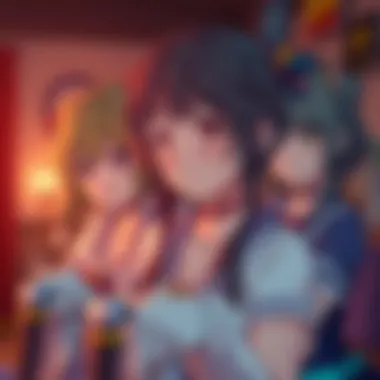

Characters within a harem can often reflect various aspects of desire, personality, and even societal constructs. This variety embodies different relationships and the challenges each character faces, resonating with audiences on multiple levels. Recognizing these types provides a deeper insight into how narratives are formed and what makes them engaging.
The Tsundere and Other Stereotypes
The tsundere is perhaps the most recognized archetype within harem narratives. Characterized by their dual nature, these characters flip between cold indifference and affectionate warmth. A prime example would be Taiga Aisaka from Toradora!. Initially, Taiga presents herself as fierce and unapproachable, yet as the story progresses, her softer side emerges. This dichotomy not only creates tension but also drives the plot forward, making viewers root for character development.
However, the tsundere isn’t the only stereotype present in harems. Other common types include:
- The Yandere: A character who is excessively devoted, to the point of dangerous obsession. Yuno Gasai from Future Diary embodies this archetype well.
- The Dandere: Typically shy or introverted, they often open up to those they trust, creating heartwarming moments. As seen with Hinata Hyuga from Naruto, their quiet demeanor hides depths of emotion.
- The Kuudere: Cool and emotionless initially, but capable of deep feelings. Shizuku Sangou from Gunslinger Girl exemplifies this complex character type.
Each of these stereotypes not only enhances the entertainment value but also contributes layers to the narrative, adding potential conflicts and resolutions that keep viewers intrigued.
The Role of Supporting Characters
While the main characters often steal the limelight in harem stories, supporting characters are crucial to establishing a well-rounded narrative. These characters serve as confidants, comedic relief, or even antagonistic forces, enriching the overall story.
Supporting characters often help clarify and amplify the complexities faced by the protagonist. They might challenge the hero's ideals, create dilemmas, or serve as a foil to accentuate the main character’s traits. For instance, in The World God Only Knows, the protagonist, Katsuragi Keima, relies heavily on his supporting cast to navigate various romantic endeavors, demonstrating how integral they are to plot progression.
Furthermore, these characters frequently embody various perspectives that resonate with the audience, drawing them deeper into the story. They provide chances for side narratives that can enhance character development and keep the main arc engaging and fresh.
Impact on Storytelling Techniques
The Hero's Harem Guild Code emerges as a fundamental framework within the anime storytelling realm, shaping not only character interactions but also the overall narrative arc. This code emphasizes a balance between multiple relationships, which subsequently influences plot progression and depth. It’s important to dig into how these methods interlink, enhancing the viewer's experience.
Narrative Structures in Harem Anime
Harem anime often play by their own set of rules, adhering to unique narrative structures that diverge from conventional storytelling. Typically, one hero finds themselves surrounded by a diverse cast of characters, usually female, who each bring different personality traits, challenges, and potential romantic connections. This format invites a layered exploration of character developments through interwoven storylines.
A well-known example can be seen in the series Nisekoi, where the protagonist, Raku, navigates romantic complications involving multiple potential love interests. Each attempt to build a relationship drives the plot, generating tension and engagement. The narrative isn't merely about who Raku will choose; it’s about how each character's individual arc shapes and reshapes group dynamics and broader storylines.
The shift from episodic to serialized formats has also transformed harem narratives. Older shows often presented individual episodes focusing on one romance at a time, but modern series strive for cohesiveness over seasons, building intricate connections and anticipation. Thus, these techniques accentuate not just romance, but the evolution of friendships, misunderstandings, and alliances that propel the narrative forward.
Pacing and Build-up of Tension
Pacing is crucial in any form of storytelling, but in harem anime, it's often the delicate art of timing that keeps audiences on their toes. The Hero's Harem Guild Code relies on carefully orchestrated moments, allowing romantic tensions to simmer rather than boil over instantly.
For instance, consider My Teen Romantic Comedy SNAFU where the protagonist, Hachiman, faces increasingly complex social scenarios. Instead of rushing to conclusions in romantic encounters, the storyline unfolds slowly, exposing intertwined friendships and personal dilemmas. This gradual build-up enhances the viewer’s emotional investment, enabling them to form deeper connections with characters.
An effective mechanism in these series is the use of cliffhangers and unresolved conflicts. By ending episodes with a question mark, creators invite viewers to speculate about the next turn of events. It maintains engagement and encourages deeper viewer interaction—an aspect integral to the fandom surrounding harem series.
"In the realm of harem storytelling, the dance of tension, conflict, and resolution forms an intricate web that binds the viewers to the characters."
By carefully balancing pacing with emotional stakes, a well-crafted harem narrative presents a tantalizing exploration of relationships that resonates well beyond the screen. As these stories develop, viewers aren’t just passive observers; they become emotionally invested in the various outcomes of the hero's decisions.
In summary, the interplay of narrative structure and pacing within harem anime adheres to a nuanced guideline, enhancing character depth and emotional pay-offs. Understanding this interplay is vital to grasp the appeal of the Hero's Harem Guild Code and its broad impact on anime storytelling.
Viewer Reception and Critiques
The reception of anime, particularly those encapsulating the Hero's Harem Guild Code, is a complex landscape teeming with varying opinions and critiques. Understanding this area is crucial, as it sheds light on how audiences perceive character dynamics, narrative arcs, and cultural commentary inherent in these stories. The responses of viewers are often a reflection of broader societal values and issues, thus making their critiques an essential facet of the conversation surrounding the genre.
Cultural Commentary and Social Issues
When diving into the cultural commentary presented in harem anime, it's essential to recognize how these series often hold a mirror to society, highlighting various social issues. For instance, themes like gender roles, romantic expectations, and interpersonal dynamics frequently surface.
Often times, viewers find themselves scratching their heads at how certain character designs or situations present unrealistic portrayals of relationships, which can elucidate a deeper commentary on societal standards. The interplay between fantasy and reality in these anime offers a unique space for dialogue.
- Gender Dynamics: Harem narratives frequently depict specific archetypes, such as the nurturing maiden, the aloof antagonist, or the fiercely independent heroine. This can spark discussions regarding whether these portrayals reinforce or challenge traditional gender norms.
- Romantic Status Quo: The way harem stories handle romance can also be revealing. While they often play into tropes that depict idealized relationships, critics argue this can create unrealistic expectations for viewers, especially younger audiences who are still shaping their understanding of love and friendship.
"Anime has an uncanny ability to discuss societal constraints while simultaneously reinforcing them, leaving viewers with even more questions about what they value in their own relationships."
Community Responses and Trends
Exploring community responses and trends in the reception of harem anime provides insight into its evolving landscape. As technology enables viewers to share their opinions, we witness a rich tapestry of discussions across platforms.
- Online Forums: Websites like Reddit host myriad threads where fans and critics dissect episodes, exploring everything from character motivations to narrative twists. These spaces create a shared ground for expressions, allowing everyone from casual viewers to die-hard fans a voice.
- Social Media Trends: Platforms such as Twitter and TikTok underscore how quickly fans can influence perceptions of a show. Hashtags often emerge around trending anime, leading to real-time discussions that can elevate a series in popularity or lead to its critique — or even cancellation.
- Fan Art and Memes: The community’s creative expressions, like fan art and memes, not only reinforce popular narratives but can also serve as a critique of problematic themes. This art often encapsulates the essence of characters while providing commentary on their roles within the story.
As we analyze the reception and critique of harem anime, it becomes apparent that viewer perspectives significantly shape the conversation. Critiques often emerge from personal experiences and cultural backgrounds, emphasizing the genre's impact and relevance in today's sociocultural tapestry. The interplay of cultural commentary and community engagement serves to both celebrate and scrutinize these narratives, enhancing the richness of the harem genre.
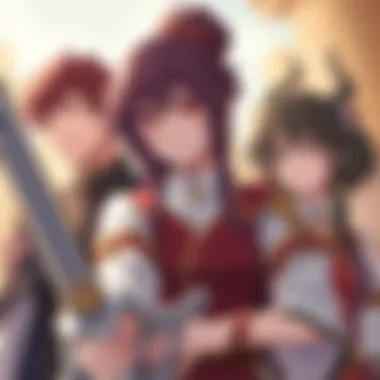

For further exploration of viewer reception and critical discussions in anime, one might consider looking into forums like Reddit and resources such as Britannica for a more academic perspective.
Interplay with Technology and Apps
In today’s fast-paced world, technology’s grip on nearly every aspect of life is undeniable. The anime community, particularly those who revel in the Hero's Harem Guild Code, is no exception. This interplay between technology and anime not only enhances the way narratives are consumed but also amplifies the harem genre's cultural expressions. Understanding these connections is vital, as they represent shifts in how fans engage with their favorite series and characters, evolving the experience to levels previously unimaginable.
Innovative Anime Apps and Platforms
The rise of innovative anime apps has profoundly transformed how fans interact with content related to the Hero's Harem Guild Code. Among these platforms, Crunchyroll and Funimation stand tall, offering vast libraries of anime series, often featuring genres like harem. These platforms do more than merely stream shows; they provide communities where fans can connect, discuss, and dissect characters and plots. The comment sections and forums allow for an exchange of ideas that enriches the viewing experience.
Moreover, newer applications like AnimeLab and HiDive focus on personalized recommendations based on a user’s viewing habits. This tailored approach helps fans discover hidden gems within the harem genre that they might have overlooked otherwise. Notably, some apps also explore interactive elements. These features allow viewers to engage with episodes through polls and predictions, further immersing them into the narrative world.
Enhancing Viewer Engagement Through Technology
Engagement is at the heart of fandom, and technology has equipped creators and consumers with tools to enhance this connection. Streaming platforms today have integrated features such as watch parties and live chats. These functionalities enable fans to tune in at the same time, sharing reactions and insights in real-time. Such communal viewing experiences have been particularly beneficial in harem anime, where character interactions and dynamics often lead to engaging discussions.
"Harem anime provides fertile ground for dialogue; character relationships are complex and diverse, making fan discussions rich and varied."
Beyond community engagement, social media plays an integral role. Platforms like Twitter and Reddit allow for immediate discussion on episodes as they air, promoting a culture where fan theories flourish. Through hashtags and threads, fans can debate character choices and plot twists, making them feel part of a larger narrative beyond just passive viewing.
Furthermore, some anime apps have adopted gamification strategies. For instance, users can earn badges or rewards for watching specific series or participating in discussions. This not only encourages continuous engagement but also brings a competitive spirit to the viewer experience.
In summation, the interplay between technology and the Hero's Harem Guild Code is transforming the anime landscape. By utilizing cutting-edge apps and engaging in dynamic discussions, fans are weaving a richer tapestry of understanding and enjoyment, ushering in a new age for the harem genre.
Future of the Hero's Harem Guild Code
As the landscape of anime continues to evolve, the Hero's Harem Guild Code faces a crossroads that merits thoughtful examination. The shifts in viewer preferences and technological advancements shape how stories are told, the kinds of characters that emerge, and what themes resonate. Understanding these developments holds great significance not only for creators but also for fans who invest their time and passion into these narratives.
One major element shaping the future of this genre is the increased collaboration between creators across cultures. As globalization takes root, we see influences from Western storytelling methods seeping into traditional anime formats. This fusion may lead to a richer diversity of character arcs and relationship dynamics within harem stories. Harem plots might soon incorporate elements like character agency, where female leads participate actively in their narratives rather than merely serving as the backdrop to the hero’s journey. The intention here is to allow a broader range of viewer experiences while also challenging dated narratives.
Another consideration is the growing prevalence of mobile applications and streaming platforms. Anime apps such as Funimation and Crunchyroll have opened floodgates for accessibility. With the rise of mobile content consumption, harem stories may become more serialized, deploying cliffhangers and rapid character developments fit for a binge-watching audience. Fans may expect not just episodic releases but interactive storytelling where they influence plotlines through votes or comments, adding another layer to engagement.
The element of technology also extends to creative production tools that enable lesser-known creators to contribute fresh ideas to the harem genre. Crowdfunding and independent productions can lead to innovative takes on character representation, which we touch upon next.
Trends in Modern Anime Adaptations
Modern adaptations of harem stories are not just retreading old paths; they are exploring new avenues. Recent hits like Re:Zero and Kaguya-sama: Love is War utilize clever narratives that break traditional walls in character dynamics. These shows show how tropes can evolve into multi-dimensional personalities instead of relying on one-note caricatures.
The phenomenon of gender swapping characters is becoming more common, mixing up gender roles within the harem framework. Audiences are challenged to rethink these dynamics, discovering that the essence of romance cannot be boxed into straightforward narratives. Such adaptations pique interests not only for their romantic plots but also for their explorations of identity and relationships.
Some narrative choices now tilt towards off-beat humor alongside romance, showcasing characters in varied, less predictable scenarios. The storylines are becoming more layered, where the comedic relief doesn't sacrifice depth but rather enhances interpersonal relationships. This trend allows viewers to engage more profoundly with the fabric of the narrative without feeling burdened by overly dramatic elements.
The wide array of platforms also allows short-form anime series to flourish. These allow compact storytelling that focuses on just one or two characters, possibly offering a fresh harem perspective squeezed into bite-sized episodes.
Potential Shifts in Character Representation
Character representation is a crucial aspect that many harem stories are beginning to rethink. The traditional roles often given to female characters, like the supportive love interest or the unattainable figure, are slowly giving way to more substantive portrayals. Female characters are increasingly being written with their own goals, flaws, and dynamics that have nothing to do with their romantic interests.
This shift is not just about moral obligation but reflects a broader change in audience expectations. Fans are now demanding narratives that treat women as complex individuals rather than mere appendages to male heroes. As representation becomes a focal point, characters such as Gon Freecss or Shinobu Kocho evolve not only in romantic light but within their distinctive arcs showing personal growth and circumstance.
In parallel, male characters are also being presented in less stereotypical roles. The rise of stories showcasing vulnerability among male leads, allowing moments of doubt, struggle, and emotional depth, complicates the archetype itself. There is a growing acceptance that strength can come from not solely physical prowess but also from emotional stability and interpersonal relationships.
"The idea of the hero is evolving. They aren’t just about achieving goals but understanding their place in others’ lives."
As creators push boundaries, we can expect intricate relationships that go beyond simplistic desires. Characters facing moral dilemmas, conflicting loyalties, and their journeys toward personal clarity will provide a rich texture for storytelling.
Finale
The arena of the Hero's Harem Guild Code unveils an intricate tapestry woven from character relationships, societal expectations, and cultural nuances. This article has ventured into various facets of the Harem genre, dissecting how these elements coalesce to form compelling narratives in anime.
Importance of End in This Article
Summing up the discoveries made throughout this exploration is not just a mere formality; it serves to reinforce the crucial insights gained. The feeling of interconnectedness between characters often paves the way for the audience's emotional investment. When characters navigate their relationships, it mirrors the complexities of real-life dynamics, making the stories resonate deeply. Here are a few specific elements and benefits to consider:
- Character Development: By concluding on the notes of how relationships evolve within the Harem framework, readers gain insight into character depth, stemming from their individual backgrounds and motivations.
- Cultural Reflections: The genres' narratives often mirror or challenge societal views. Engaging with these stories allows audiences to reflect on and critique their environments.
- Narrative Technique: Reinforcing the unique storytelling techniques used opens up discourse on how they can influence future anime. Emerging creators may draw inspiration from these techniques, advancing the craft further.
As we step back from the analysis, it’s evident that the Hero’s Harem Guild Code does more than entertain—it elucidates nuanced cultural dialogues, fosters emotional connections, and highlights the evolving nature of storytelling in anime. This understanding, particularly for anime fans and tech enthusiasts, stands to enrich their viewing experiences and lead to a greater appreciation of this genre.
"Anime is more than just entertainment; it's a reflection of social connections and cultural narratives."
In concluding, the Hero's Harem Guild Code is not just a set of rules dictating character interactions. Rather, it's a compelling framework housing a wealth of meaning and significance. This exploration emphasizes the need to recognize these layers as they enhance our understanding and engagement with not only anime but the cultures that shape them.


